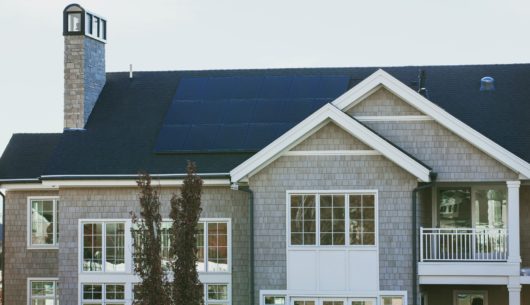Blog
How to make the most of electricity from photovoltaics? Can it be sold?
Your own electricity from photovoltaics means a significant saving on electricity bills. Investing in panels is even more profitable when we consume solar electricity at the same time as it was produced. However, this is not always possible. Check how to make the most of electricity from photovoltaics!
Table of contents
- How to sell electricity from photovoltaics?
- How is electricity from photovoltaics billed?
- Home remedies for excess electricity
A photovoltaic installation allows you to convert the sun’s rays into electricity, which is supplied to our home network. In summer, there are often surpluses in electricity production and it is not always used on an ongoing basis. Can we use the excess energy on our own at a later date or sell the electricity produced? We explain!
How to sell electricity from photovoltaics?
It is commonly said that we can sell electricity from photovoltaic panels. Officially, however, the case is that an individual prosumer (in the context of RES, a natural person who both produces and consumes electricity) cannot derive material benefits from the sale of the energy produced. However, the fact is that we can transfer the surplus of produced energy to our operator’s grid (this is called electricity storage), and when we have a higher demand for electricity (e.g. in winter due to heating the house), we can take it from the grid, with a discount. The discount we receive depends on the size of our installation. According to the current regulations, prosumers receive 20 to 30 percent less energy back. It should be noted that if we want to be able to recover energy, we must invest in an on-grid photovoltaic installation, i.e. an installation connected to the grid. Of course, the option of selling or collecting 100% of the generated energy would sound more appealing, but losing 20 or 30 percent is really profitable for the prosumer from an economic point of view. It allows you to get the most out of your installation and save on your bills.

How is electricity from photovoltaics billed?
You have 365 days from the moment of introducing energy into the grid to settle the surplus electricity produced . Energy is consumed when the system is not able to provide us with enough of it from the current resource. We settle accounts with our operator at the end of a given settlement period on the basis of the balance of energy given back and consumed.
Home remedies for excess electricity
It should be taken into account that photovoltaic panels produce the most energy in the middle of summer and around noon, and electricity consumption largely depends on the type of devices used, as well as the habits of the household members. Therefore, it is worth thinking about how we can adjust the functioning of our home in terms of electricity consumption to the production of energy from the sun. For example, you can cool your home with air conditioning before returning home via a remote control system. During this time, you can also charge your electric car. Thanks to the use of free electricity, the profitability of using heat pumps also increases and at the same time the profitability of investing in a photovoltaic installation increases. Small surpluses in winter can be used by a heat pump to heat domestic water. The pump can be configured in such a way that it continuously draws energy for heating, and any excess energy can be stored in the form of heat in an insulated water tank. Of course, these are just a few ideas. It all depends on the individual needs of the household members. We recommend considering a plan that will help reduce the amount of energy returned to the grid.